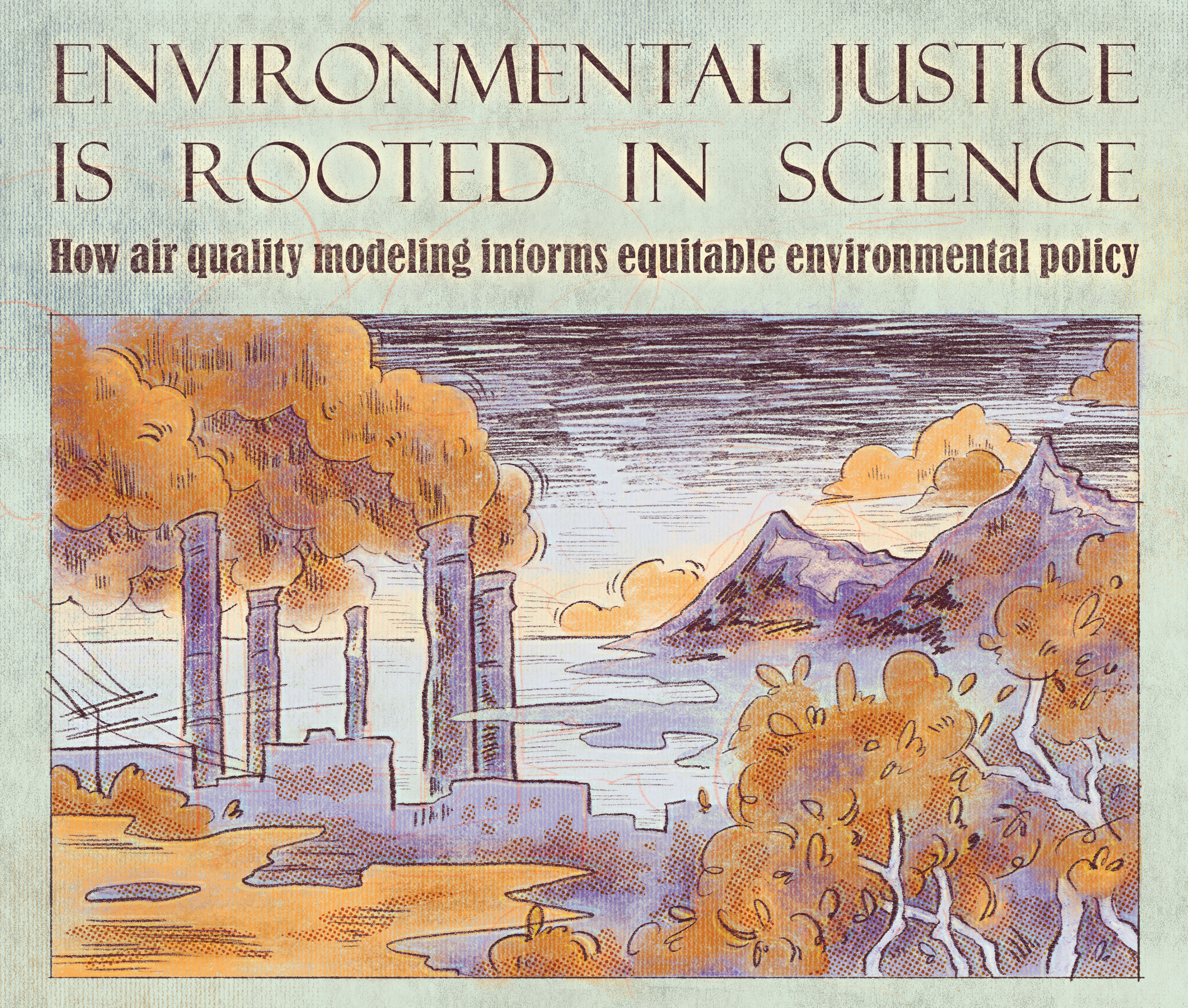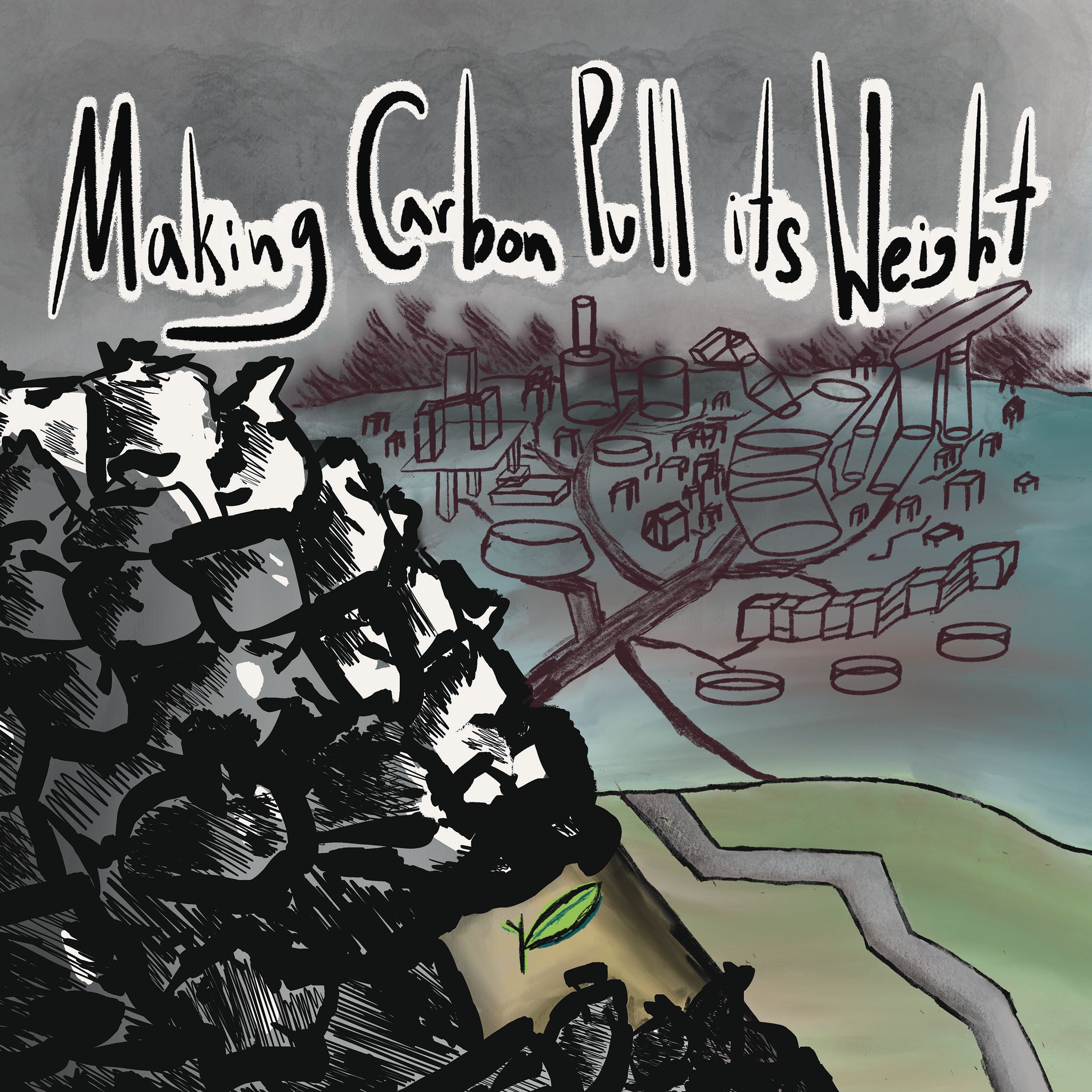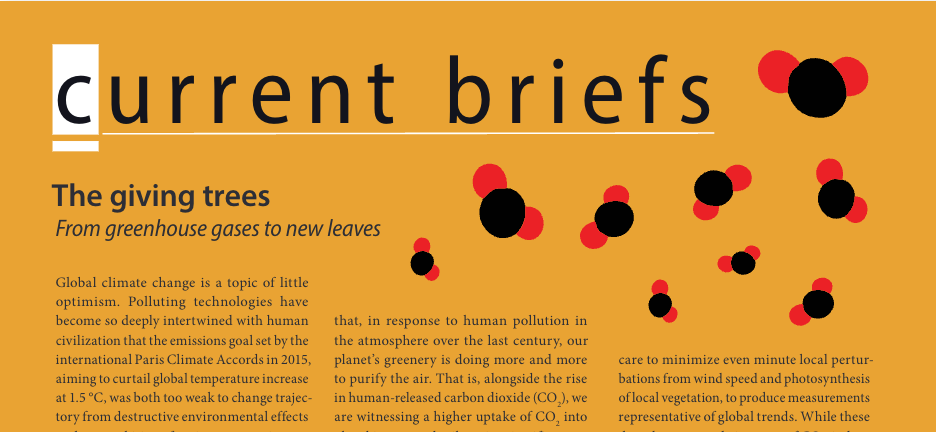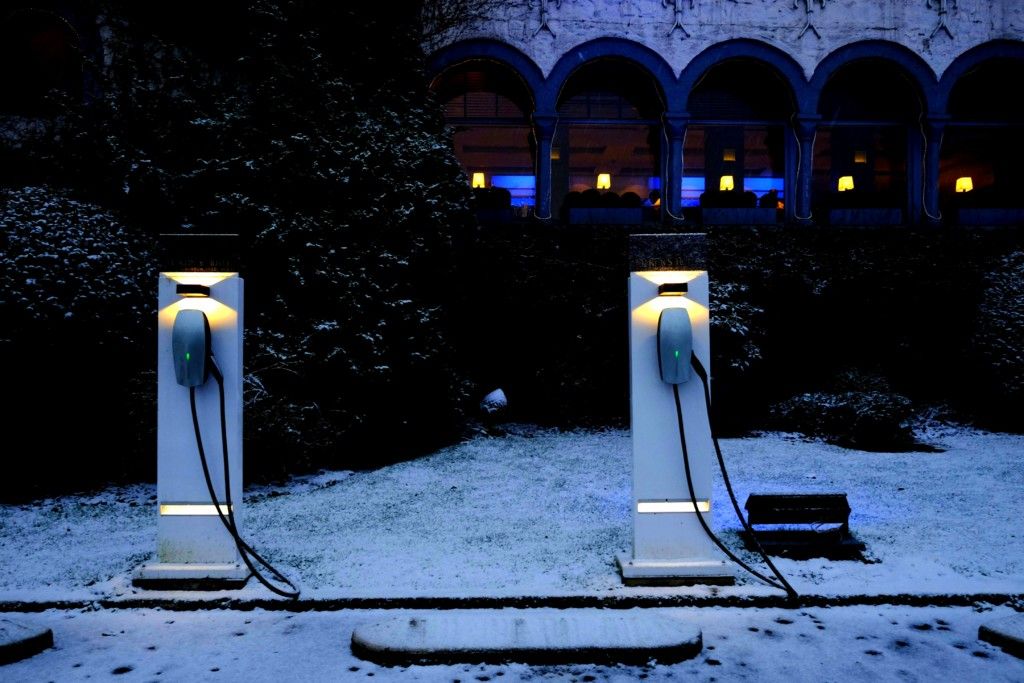
Carbon dioxide (CO2) is the primary
greenhouse gas emitted through human activities, and the electric power and
transportation sectors are the two largest emitters of carbon dioxide in the
United States. Unsurprisingly, these two sectors are the main targets of climate
policies. While in recent years the electric power sector has been moving fast towards
decarbonization, the transportation sector has not. According to [the U.S.
Energy Information Administration (EIA)](https://www.eia.gov/totalenergy/data/monthly/index.php#environment), between 2007 and 2017, CO2
emissions from the electric power sector dropped 27 percent, whereas transportation
emissions were reduced 6.4 percent. In fact, the downward trend in
transportation emissions reversed in 2012 (see the graph below). In 2016,
transportation emissions surpassed total electric power emissions for the first
time.
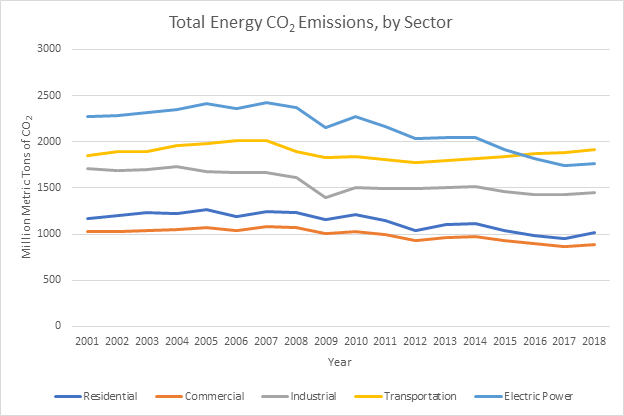 Source: Monthly Energy Review, EIA
Source: Monthly Energy Review, EIA
This is puzzling. Both sectors have viable technologies and substantial
policy support. Aggregate emission patterns should be similar for the two
sectors, so what drives the difference? My observations, based on knowledge
about consumer behavior, production technology, market organization, and
regulation in these sectors, as well as continuous attention to conversations in
the media, academic outlets, and daily life, tell me that human factors are a
large part of the differing emission trends between the transportation and
electric power sectors.
**Passenger cars are consumer goods. Electric generators
are not.
There are fundamental differences in how humans interact
with vehicles and electricity. These differences affect how the transportation
and electric power markets operate. In the electric power sector, when a person
pays her electricity bill, she is probably not thinking about buying something
she will develop a personal connection to. The source of electricity she pays
for does not impact her experience of consuming electricity. The consumer does
not even directly participate in the transaction of procuring electric power. Electric
service providers purchase electricity on behalf of residential customers in
their territories, either from a wholesale electricity market or by negotiating
contracts with power generators, before delivering it to households. The
electric power sector works because of the well-designed market mechanism and underlying
physical systems. In this market, there is not much space for customer
engagement (at least not until recently[1]).
The transportation sector differs from the electric power
sector in that the entire process is dominated by the consumers’ will, from
purchasing a vehicle, to driving it, and, eventually, to scrapping it. New car models
are pushed to the market every year, and hundreds of customized add-ons are
provided to satiate consumers’ desires for novelty and uniqueness. Automobile advertisements
are getting fancier day by day. Driving behavior is ever-changing and hard to
predict: the same driver on the same segment of road under the same conditions can
go faster or slower, sometimes influenced by her moods rather than the traffic
(unlike autonomous vehicles with set algorithms). Driver preferences are
similarly fickle and hard to predict. Leveraging data of more than 40 million
vehicle transactions, [a
study](https://www.nber.org/digest/nov12/w18212.html) showed that general feelings caused by random elements like weather
at the point of transaction can alter purchase decisions. For instance, people
tend to buy a convertible on a warm sunny day or a four-wheel drive vehicle
when it’s cold outside. In another study, researchers
found evidence for transmission of vehicle brand preferences across generations
within families.
Scientists, engineers, and policy makers have come up with
numerous ideas to decarbonize the transportation sector. In particular, for
light-duty vehicles (passenger cars and trucks we normally see on the road, which
account for around 60 percent of total
energy consumption of the sector), two proposals receive the most attention: to
replace fossil fuels with cleaner fuels, or to reduce fuel consumption by
improving fuel efficiency. Both proposals have been successfully realized. Can
we move our cars with something other than gasoline or diesel? Yes. To name a
few alternative sources: electricity, hydrogen, and biofuel. Can we drive the
same distance but use less fuel? Yes. Thanks to the [Corporate
Average Fuel Economy standard](https://en.wikipedia.org/wiki/Corporate\_average\_fuel\_economy), one gallon of gasoline can now last 34.2
miles on average for passenger cars, 6.7 miles longer than two decades ago, as
stated in a [2014
report](http://www.nhtsa.gov.edgesuite-staging.net/staticfiles/rulemaking/pdf/cafe/Performance-summary-report-12152014-v2.pdf) of National Highway Traffic Safety Administration.
But great invention and improvement do not appear on the road
automatically. Advancing the deployment of new technologies requires catering
to consumer culture and preferences (bottom-up approaches), which is more
difficult than overhauling integrated systems like power grids (top-down
approaches). In a free-market economy, it’s those busy, emotional, demanding, and
heterogeneous consumers—voting with their feet and pockets—who determine what
technologies enter the traffic system. If the technologies cause too much
disutility relative to enjoyment derived from utilization, people get
frustrated. If they are too frustrated, they refrain from owning and using
those technologies. And if users desert technologies that bring environmental
benefits, we see sluggish pollution reduction.
Electric Vehicles (EV) are hard and inconvenient to use.
EV drivers often must bear more inconvenience than gasoline
car drivers. Long road trips are particularly challenging with EVs, because the
current minimum and median range of pure EVs in the U.S. are [58
and 114.5 miles](https://evadoption.com/statistics-of-the-week-comparing-vehicle-ranges-for-gas-bevs-and-phevs/), versus 240 and 412 miles for gas/diesel cars. For
comparison, the median distance of long-distance trips by personal vehicles in
the 2001 National Household Travel Survey is [194
miles](https://www.bts.gov/statistical-products/surveys/national-household-travel-survey-long-distance-travel-quick-facts). Therefore, EV drivers must plan their routes carefully to ensure they
can recharge as they go, because the distribution of public charging points is
sparser than that of gas stations. There are 21,882
public charging stations in the US (among which only 2,872 are fast-charging,
disproportionally located in urban areas), compared to around 111,100
gas stations. It also takes much longer to charge a battery than to top off a gas
tank. Depending on the battery size, the type of outlet at the charging
station, and whether the car is equipped for fast charging, charging time
ranges [from
40 minutes to more than 24 hours](https://pod-point.com/guides/driver/how-long-to-charge-an-electric-car).
To put this into context: this summer, I booked a ride with
a driver from a transportation network company to visit my grandparents, who
live in a town four hours away from where my family lives. When my mother saw
that the car we booked was an EV, she insisted that the driver find a gasoline
car. Her strong feeling stemmed from her previous unpleasant experience with an
EV, which almost ran out of power in the middle of the freeway. The EV driver had
to get off the freeway, look around for a charging station (the nearest one
turned out to be in a city 30 minutes away), and wait another hour to charge the
car. What was supposed to be a four-hour trip became seven hours instead.
This is not an extreme example. My story lines up with
broader consumers’ concerns suggested by a myriad of small- and large-scale surveys.
In 2011, Deloitte
asked 13,000 individuals in 17 countries about their attitudes towards pure EVs.
They found that both driving range and recharge time are far from reaching
consumers’ expectation. Another survey by [Cox
Automotive](https://www.google.com/url?sa=t&rct=j&q=&esrc=s&source=web&cd=1&cad=rja&uact=8&ved=2ahUKEwiJ1Izw043jAhUUOn0KHWWmBlcQFjAAegQIBhAC&url=https%3A%2F%2Fwww.eia.gov%2Fconference%2F2017%2Fpdf%2Fpresentations%2Frebecca\_lindland.pdf&usg=AOvVaw3tb6zwmhdWrCZzAWhs8kfq) in 2016, with 6,499 U.S. respondents, revealed more subtle doubts:
longevity of the battery, performance in harsh winters, manufacturers’ roadside
assistances, compatibility of charging standards, and so on.
Fuel economy does not sell well.
[Fuel
efficiency](https://en.wikipedia.org/wiki/Fuel\_efficiency), also often termed fuel economy, describes how well the
potential energy embedded in one unit of fuel is transformed into movement. One
specific way to measure fuel economy is the number of miles that a vehicle can
travel using one gallon of gasoline (miles per gallon, or MPG). The higher fuel
economy of a car, the more money the driver can save, because with the same
amount of gasoline, the driver can drive farther. Meanwhile, carbon emission is
reduced, as less fuel is consumed. This sounds like a win-win situation for
consumers and environmentalists.
Yet the reality is that car buyers are not as excited about
fuel economy as expected. Fuel economy is less frequently cited as the most
important factor determining purchase than attributes like safety, comfort, or new
technology. Moreover, consumers are not quite willing or able to pay the price
premium upfront, even though the projected cost saving is relatively large.
Finally, people may be confused and make mistakes about which car model can
achieve specific savings under what gas price[2].
Numerous studies have tried to uncover the underlying mechanisms
creating this tepidness. The behavioral school of thought mainly focuses on
issues with a human’s decision-making process: incomplete information, cognitive
limitations, biased beliefs, etc. People are busy, and when they are not, they
prefer leisure over tedious tasks like searching and solving math problems. If
time and effort are required to accurately ascertain the lifetime value of fuel
economy, consumers might just ignore it. Besides, they might be myopic and
discount wealth in the far future more than near feature. Fuel savings in 10
years might not sound as appealing as an extra $1,000 in their bank account today.
An alternative school of thought suggests that consumers
could still be fully informed and rational, but simply be unable to afford a
more expensive, fuel-efficient vehicle even though it will eventually offer
savings. Besides, fuel economy can also
come with something that the consumers dislike. For instance, automakers may sacrifice
other attributes of cars, such as size and horsepower, to boost up fuel economy.
Fuel-efficient cars, then, become less favored by drivers who value things like
size and horsepower.
What can we do?
Understanding and catering to human factors is crucial. Even
in the electric power sector, which enjoys the advantage of having a relatively
centralized system, consumer engagement still brings additional benefits. For
example, promoting demand response to fluctuation in supply using time-varying
electricity prices is one of the most important items on policymakers’ agendas.
Findings from several studies[3]
suggest that consumers do respond to price signals, but responses vary in terms
of magnitude and persistency. So, while consumer engagement is important, it is
also difficult to manage. If the electric power sector has taught us that it’s already
hard to alter consumer behavior when only one factor (price) is involved, then one
can imagine the difficulty of altering behaviors when location, speed, comfort,
and connectivity all require consideration, as is the case in the transportation
sector.
However, some early endeavors to understand consumer
behaviors in transportation look promising. A team at Lawrence Berkeley
National Laboratory developed BEAM (short
for Behavior, Energy, Autonomy, and Mobility), a transportation simulation framework
explicitly incorporating travel choice behaviors and spatial distributions of EV
charging infrastructure. It’s a powerful virtual environment to analyze the
impacts of changing mobility trends and rapidly-evolving technologies.
There are also experimental programs initiated by industry
partners. For instance, RetailCo, a major US retailer, accepted the offer from ChargePoint,
a network company of EV charging infrastructure, to install six stations near
its stores. According to their estimation, after the EV charging stations were
installed, the average customer dwell time within stores increased by 50
minutes and gross revenue by approximately $56,000 over the course of the nine-month
piloting period. This success was followed by construction of more stations
funded by RetailCo.
We now have quite mature and ever-improving technologies for
fuel economy and alternative fuel sources, as well as political momentum and policy
prototypes. But to realize the full
environmental benefits of the new technologies, we have to pay more attention
to what consumers want. Changing the everyday decisions taking place
within each household, on each street, and in each person’s mind can achieve
real and widespread changes in transportation CO2 emissions.
[1] Things
have changed a bit lately with retail restructuring (allowing a person to switch
to another electricity service provider) and time-varying electricity pricing
(allowing temporal shift in consumption based on change in prices).
[2] One
widely-cited example is MPG illusion. People
falsely believe that the amount of gas consumed by an automobile decreases as a
linear function of a car's MPG, while the actual relationship is curvilinear. For instance,
an increase from 10 to 20 MPG corresponds to a 100 percent reduction in fuel
consumption, whereas an increase from 50 to 60 MPG is only a 20 percent
improvement, although in both cases the difference is 10 MPG. Consequently,
people underestimate the value of removing the most fuel-inefficient vehicles.
[3] See Fowlie et. al. (2018), Gillan (2018), Ito et. al. (2018), Jessoe and Rapson (2014), Wolak (2011), Allcott (2011) for findings from field experiments; Harding and Sexton (2017) for a comprehensive review.
Featured image source: Hugues Draelants, Tomorrow Needs Today
